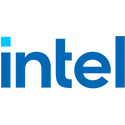
ASUS & AsRock Motherboards Updated with BIOS Support for Intel 14th Gen Core
Momomo_us posted on Twitter about their finding of a BIOS firmware update for an Intel chipset motherboard from AsRock, others soon pointed out that ASUS had quietly revised a higher-end model as well. Both boards share the same socket platform - LGA 1700 - and currently support Team Blue's 13th Gen Raptor Lake CPU series, but new details presented on pages for the ROG Maximus Z790 APEX and B760M PG Sonic WiFi suggests that these models are pre-prepared for the (still heavily rumored) launch of Raptor Lake Refresh. The changelogs for their respective BIOS updates mention "compatibility for the next-gen" and "support for next-generation" processors. TPU community member, Nater, has pointed out that his ASUS ProArt Z790-CREATOR WIFI board is also eligible for 14th gen support.
Leaks suggest that the Intel 14th Gen Core lineup is expected to launch around October time this year. Raptor Lake Refresh is likely going to serve as a sort of interim release, since insiders think that desktop Meteor Lake-S SKUs are no longer on the menu, and a full-fledged next-gen upgrade - Arrow Lake-S - is not due until Q4 2024 or Q1 2025. Not much is known about how much more performant the RPL refresh will be when compared to the existing range, but more leaks are expected in the coming months. Mobile Meteor Lake examples have been spotted in the wild recently, in official and less official capacities, so keep your eyes peeled.
Leaks suggest that the Intel 14th Gen Core lineup is expected to launch around October time this year. Raptor Lake Refresh is likely going to serve as a sort of interim release, since insiders think that desktop Meteor Lake-S SKUs are no longer on the menu, and a full-fledged next-gen upgrade - Arrow Lake-S - is not due until Q4 2024 or Q1 2025. Not much is known about how much more performant the RPL refresh will be when compared to the existing range, but more leaks are expected in the coming months. Mobile Meteor Lake examples have been spotted in the wild recently, in official and less official capacities, so keep your eyes peeled.































































